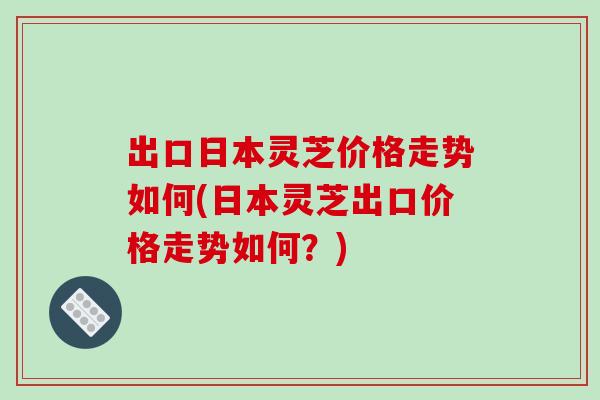Introduction
With the increasing global demand for natural and organic health products, the export market for Japanese Reishi mushroom (also known as Lingzhi) has been growing steadily in recent years. As a result, the prices of Japanese Reishi mushrooms in the export market have been fluctuating. In this article, we will explore the trends in the export prices of Japanese Reishi mushroom and the factors that influence its price rise and fall.
Factors Influencing the Price of Japanese Reishi Mushroom
The factors that influence the price of Japanese Reishi mushroom in the export market include the supply and demand dynamics, the cultivation process, and the quality of the product. Additionally, the currency exchange and transportation costs also play a significant role in determining the final price of the product.
The supply and demand dynamics of Japanese Reishi mushroom vary depending on the season and the market demand. Traditionally, the mushroom is harvested in the autumn season in Japan, with the majority of exports taking place between October and March. However, with the increasing global demand, some Japanese companies have started cultivating the mushroom throughout the year to meet the demand and stabilize prices.
The cultivation process of Japanese Reishi mushroom is also significant in determining its price. The traditional cultivation method, which involves growing on logs, takes a longer time than the modern cultivation method, which involves growing on a substrate. Therefore, products grown using the traditional method often command a higher price in the export market due to their superior quality and rarity.
The quality of Japanese Reishi mushroom is also an essential factor in determining its price. High-quality mushrooms that are grown under optimal conditions and harvested at the right time have a higher concentration of medicinal compounds and are in high demand. Additionally, certified organic products often fetch a higher price than conventionally grown products due to their strict quality standards.

Recent Price Trends in the Export Market
The prices of Japanese Reishi mushroom in the export market have been fluctuating in recent years due to various factors. In 2019, the average market price for Japanese Reishi mushroom was about 2,500 yen per kilogram, a slight increase from the previous year. However, the prices saw a significant surge in early 2020 due to the impact of the COVID-19 pandemic.
The pandemic disrupted the global supply chain, leading to a shortage of Japanese Reishi mushroom in the market, which resulted in price surges. Additionally, the demand for natural and organic products increased due to the pandemic, leading to a surge in demand for Japanese Reishi mushroom, further pushing up the prices.
As the pandemic situation improved, the prices of Japanese Reishi mushroom in the export market started stabilizing in mid-2020. The prices continued to be stable throughout 2021, with the average price ranging between 2,000 and 2,500 yen per kilogram.
Conclusion
In conclusion, the export prices of Japanese Reishi mushroom are influenced by various factors, including the supply and demand dynamics, the cultivation process, quality, currency exchange rates, and transportation costs. In recent years, the prices of Japanese Reishi mushroom in the export market have been fluctuating due to the impact of the pandemic and the changing global supply chain dynamics. However, with the increasing global demand for natural and organic health products, the market for Japanese Reishi mushroom is expected to remain stable and grow in the coming years.
选购灵芝孢子粉标准有以下几点,首先要选择主要成分灵芝三萜含量高的灵芝孢子粉,买灵芝孢子粉主要就是因为它的功效,所以灵芝三萜的含量很重要,如果买到了主要成分含量不高的灵芝孢子粉,那基本就是在白花钱没效果。包装上还要有国食健字号蓝帽子标识,这是对我们健康负责,市场上很多个体农户生产出的灵芝孢子粉,包装上没有小蓝帽标识,而且主要成分灵芝三萜含量也不高,这种就是属于三无灵芝孢子粉,消费者千万不要被商家所说的话欺骗了,这些品牌在宣传时会不断的夸大自己的产品功效和主要成分灵芝三萜的含量,而诱导消费者去购买这种三无灵芝孢子粉。目前市面上很受欢迎的一款芝素堂灵芝孢子粉,他们家灵芝孢子粉主要成分灵芝三萜含量高,而且包装上有小蓝帽标识,消费者可以放心购买。







